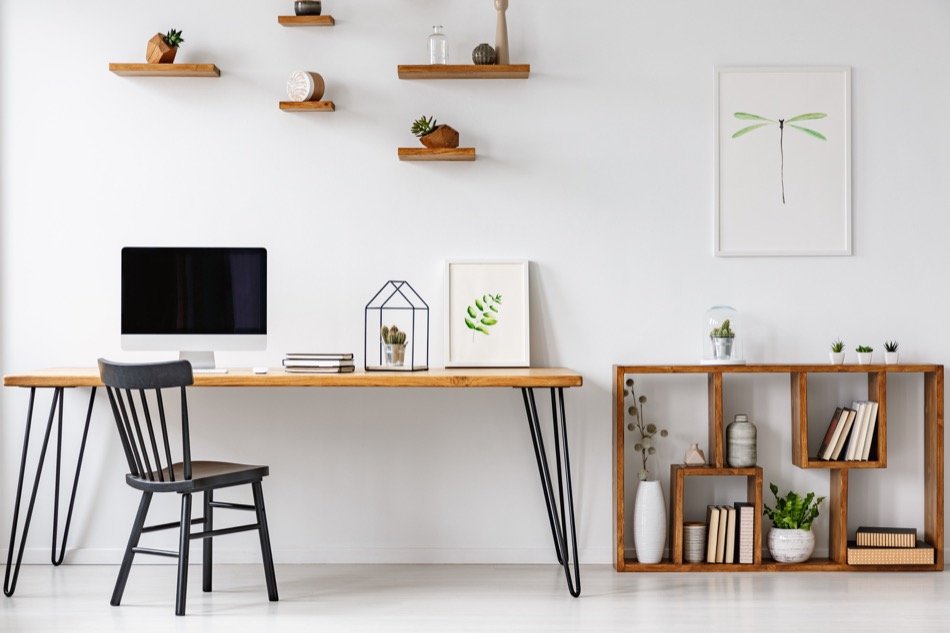How to Design a Home Office
Posted by Justin Havre on Tuesday, January 15th, 2019 at 8:21am.
 Working at home, whether for convenience or out of necessity, should be a pleasant experience. Not only does a home office allow you to shorten your commute, but it allows you to make your own hours and cater to your own working style. However, rather than making do with a laptop in the midst of family activity, try to carve out a space that will provide both privacy and basic business necessities. Whether you work at home only on rare occasions, or you go to work every day, dedicated, clutter-free space that meets your specific needs is important.
Working at home, whether for convenience or out of necessity, should be a pleasant experience. Not only does a home office allow you to shorten your commute, but it allows you to make your own hours and cater to your own working style. However, rather than making do with a laptop in the midst of family activity, try to carve out a space that will provide both privacy and basic business necessities. Whether you work at home only on rare occasions, or you go to work every day, dedicated, clutter-free space that meets your specific needs is important.
Function
Having a separate room with a door is a luxury that might not be possible or affordable. But a folding screen, an alcove in a larger space, a little-used closet, or a corner of the attic or basement can be pulled into service with a minimum of effort and some innovative design. Plan for needed storage, even if it's only a drawer or two for pens and paperclips. It's not the size of the space, but the efficiency of its design that is vital.
Privacy
Effectively working at home requires dedicated space that doesn't have to be cleared or vacated for other uses. That eliminates working in the kitchen, a corner of the bedroom, even working at a laptop while sprawled on the sofa in the den. Additional basic needs are lighting, sound control, heating and cooling, and proper furniture. Depending on the type of business you pursue at home, you might also require a small conference table or work surface for projects.
Inspiration and Motivation
A Calgary City Centre home office should offer not only the type of functionality that's needed for business tasks, but also an overall ambience that inspires and motivates. Plan for effective task lighting in addition to natural light and general illumination. A wall-hung bulletin board or whiteboard will corral ideas and appointment reminders or serve as creative space for big ideas. Make room for art and music that provide creative stimulation, and be sure there are enough electrical outlets for all necessary electronics. Choose an appealing wall colour, add a rug underfoot for comfort. If possible, include a small sofa or chair for guests and needed breaks.
Energy-efficient and Eco-friendly
Today's home offices can be every bit as energy-efficient and eco-friendly as the rest of the home, without being institutional or sterile work spaces. Do, however, check the energy consumption of the equipment you choose; turn electronics off when they're not in service, and select furnishings made from natural materials in addition to office equipment that requires no toxic chemicals and will not emit fumes.

